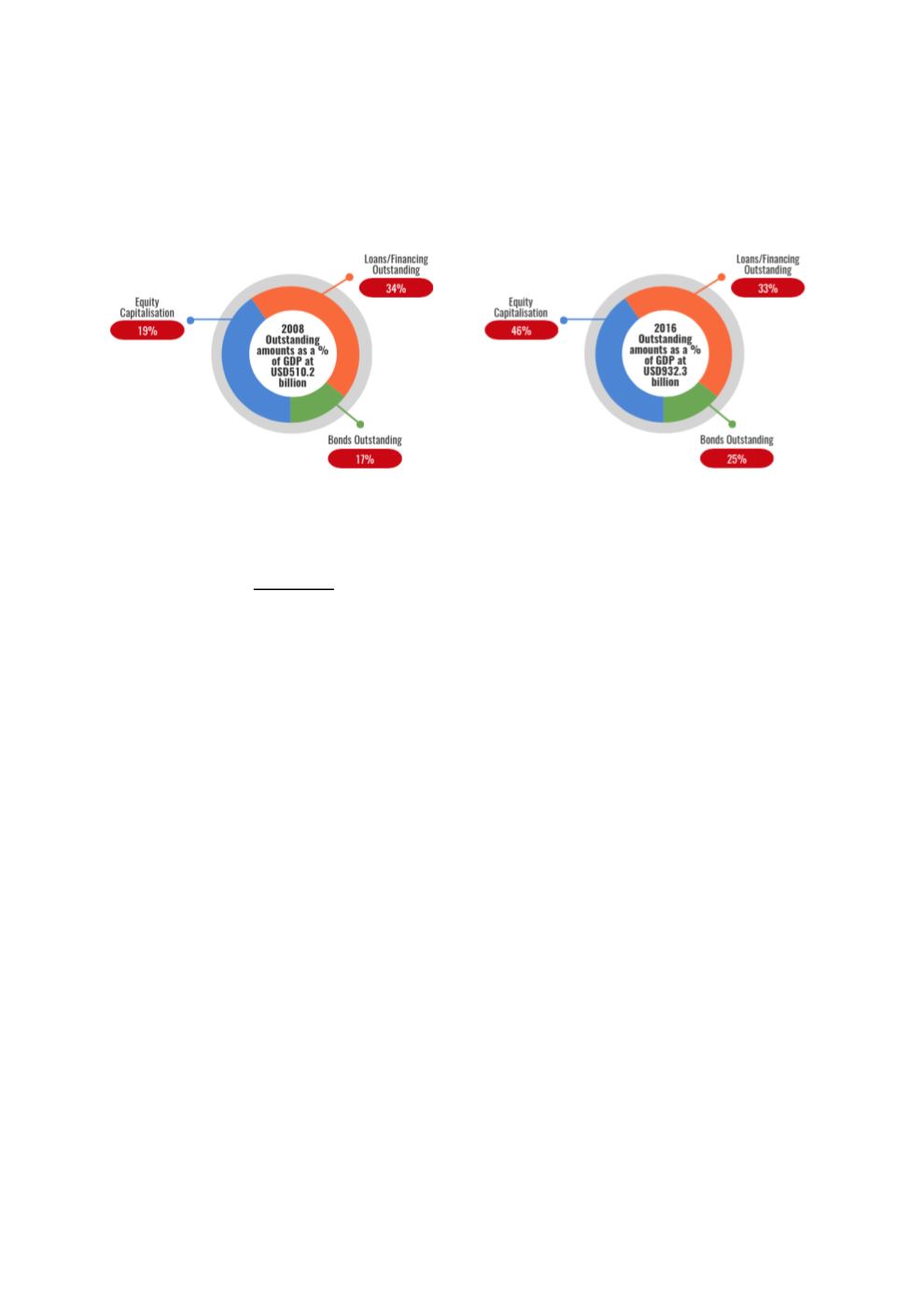

125
Accordingly, there is a plenty of room to expand total outstanding debts to GDP, which stood at
25% as at end-2016―a slight improvement over the 17% as at end-2008 (refer to Chart 4.38).
Chart 4.38: Indonesia’s Outstanding Capital Markets vs Bank Financing Relative to GDP
Sources: World Bank, Bloomberg, The Global Economy
4.4.3
ANALYSIS OF SUKUK STRUCTURES, ISSUANCE AND INVESTMENT
Analysis of Sukuk Structures
In 2003, Bapepam (the regulator at that time) and the National Shariah Board of the
Indonesian Council of Ulama (DSN-MUI) signed a memorandum of understanding to
collaborate on the development of Shariah-compliant capital market products. The DSN-MUI
remains the central Shariah body empowered to govern Indonesia’s Islamic finance landscape.
As of mid-2015, the DSN-MUI had issued 96 fatwas that covered every aspect of Islamic
financial services, including generic products such as
wadiah, mudarabah
and
musharakah
contracts, instruments for liquidity, hybrid products, the treatment of non-
halal
revenue,
penalties,
takaful
and ICM operations, as well as hedging instruments. BI and the OJK
regulation enforce the fatwas issued by the DSN-MUI; all Islamic financial services entities are
required to comply with the rulings (Thomson Reuters & IRTI, 2016).
As per the OJK’s sukuk guidelines, all sukuk issuances require the prior endorsement of a
Shariah advisor licensed by the OJK. In general, Indonesia’s regulatory framework applies to
both conventional and Shariah instruments. All securities to be issued via an offer to the public
are subject to the submission of a Registration Statement and supporting documentation, and
require the approval of the OJK. Issuers of Shariah instruments are required to observe BI
regulations on foreign exchange and the stability of the Indonesian rupiah. Shariah
instruments to be listed are subject to the same listing approval and disclosure requirements
as conventional instruments, with certain additions prescribed under OJK Regulation Number
18/POJK.04/2015 concerning issuance and requirements for sukuk.
Based on historical sukuk issuances, the
ijarah
contract is the preferred contract for sovereign
sukuk (as depicted in Chart 4.39) because this structure utilises underlying assets in the form
of fixed tangible assets and projects. Meanwhile, corporate sukuk issuers prefer a mix between
ijarah
and
mudarabah
as shown in Chart 4.40.
















